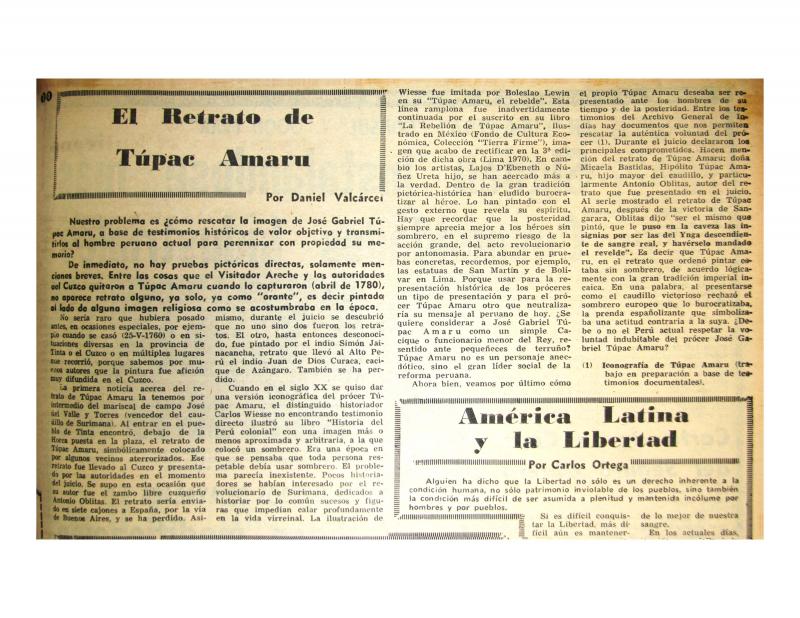A lack of period portraits prompted the organization of an official competition, which turned controversial following the jury’s drastic opinion that there were no “prizeworthy” works among the ninety-eight submissions. One of the painters considered worthy of an honorable mention, Milner Cajahuaringa, chose to publicly reject the acknowledgement. A second competition was suggested but never came to fruition. The directors of almost every visual arts institution in Peru were on the jury, whose members were chosen by government decree and included Juan Manuel Ugarte Eléspuru (the director of the Escuela Nacional de Bellas Artes) [National School of Fine Arts], Franklin Pease (the director of the Museo Nacional de Historia) [National History Museum], Francisco Statsny (the director of the Museo de Arte e Historía de San Marcos) [San Marcos Museum of Art and History], General Felipe de la Barra (the director of the Centro de Estudios Histórico-Militares) [Center for the Study of Military History], and José Miguel Oviedo (the director of Casa de la Cultura del Perú) [House of Peruvian Culture]
José Gabriel Condorcanqui, Túpac Amaru II, was an Inca curaca (chief) who led the most significant Andean rebellion against the Spanish Empire in 1780. Though relegated to traditional creole history, his image was used as an emblem by the Gobierno Revolucionario de las Fuerzas Armadas led by General Juan Velasco Alvarado (1968-1975), a regime that was focused on social reform and that was very keen on symbolic representation.
[As complementary reading on Túpac Amaru II, see the following texts in the ICAA digital archive: “¿Cómo fue Túpac Amaru?” by General EP Felipe de la Barra (doc. no. 865441); “Convocan a concurso: monumento a Túpac Amaru se levantará en el Cuzco,” anonymous (doc. no. 1053438); “Convocan a concurso de pintura para perpetuar la imagen plástica del mártir José Gabriel Condorcanqui,” anonymous (doc. no. 865422); “Declaran desierto el Concurso de Pintura ‘Túpac Amaru II,’” by Alfredo Arrisueño Cornejo (doc. no. 865498); “En busca de la imagen arquetípica de Túpac Amaru,” anonymous (doc. no. 865702); “El retrato de Túpac Amaru,” by Daniel Valcárcel (doc. no. 1052165); and “Túpac Amaru: ¿verdadero retrato?” by A. O. Z. (doc. no. 865460)].







